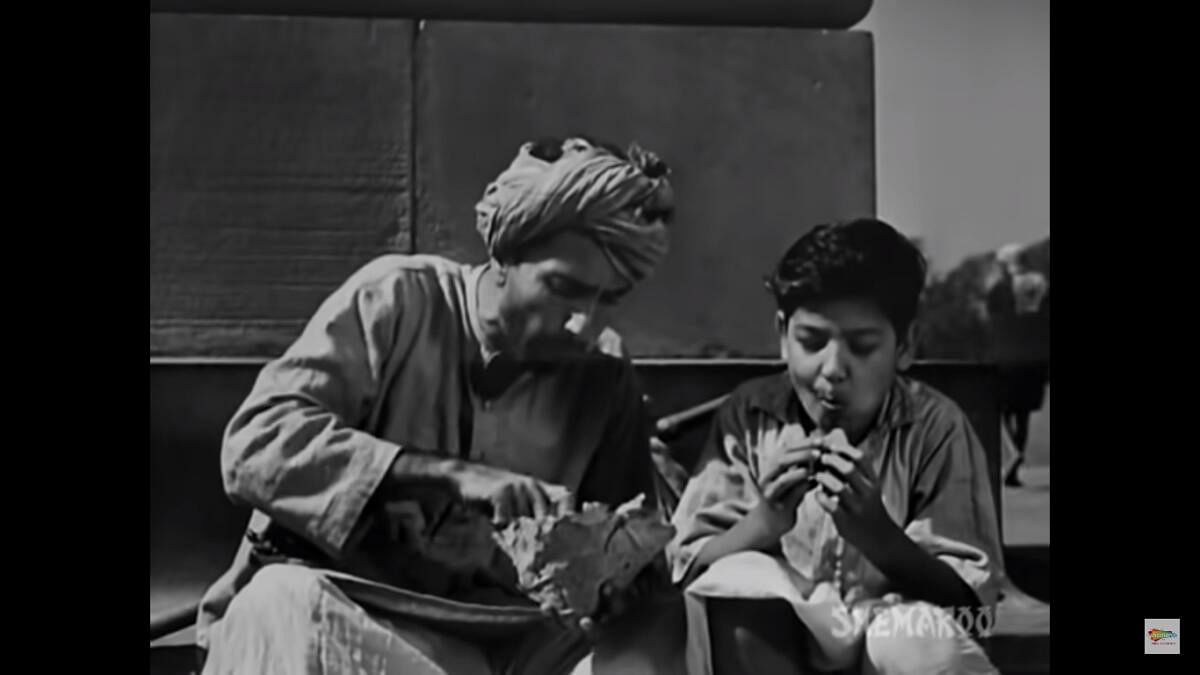‘Do Bigha Zameen’ defined rural India’s realities


Artistic expression is essentially an act of dissent— it celebrates human dignity and resilience in the face of natural disaster, societal oppression, and discrimination. Bimal Roy’s celebrated film ‘Do Bigha Zameen’ (Two Units of Land) does exactly that. It presents the stark reality of a poor farmer who has to face unjust society, besides natural disasters like drought and famine.
Released in 1953, it completes 70 years since its release. The film’s central metaphor symbolises not just a piece of property but also the hopes, dreams, and dignity of a struggling nation just then delivered into socio-political freedom after oppressive colonial rule. Ironically, it remains as relevant today. The ’50s was when Indian cinema was trying to enlarge its canvas in content and form. A new generation of progressive filmmakers was exploring the realities of the new nationhood. India being a predominantly agrarian society, exploration of rural life was dominant then. Bimal Roy was the pioneer, along with Mehboob Khan, K A Abbas and others who started looking critically at Indian society. They were sensitive to societal concerns and also professional in their approach at a time when filmmaking skills were evolving. They were aware of the developments in the art and craft across the globe and were greatly influenced by Italian neorealism, then the dominant form of artistic expression in Europe, and focused on presenting war and dehumanised living conditions.
‘DoBigha Zameen’ shows how Indian cinema then was influenced by the school of social realism. Its black-and-white cinematography, coupled with Roy’s deft use of light and shadow, adds depth to the storytelling. Since Indian independent cinema had not come of age, Bimal Roy and others like him merged art and commerce to create a film still regarded as a benchmark. It paved the way for the Indian neorealist movement and the Indian new wave, led by Satyajit Ray’s film ‘Pather Panchali’ (1955).
‘Do Bigha Zameen’ revolves around a poor farmer, Shambhu (played by Balraj Sahni), who has to grapple with exploitative landowners, oppressive feudalism, and the impact of indiscriminate industrialisation. He is forced to leave his ancestral land and work as a rickshaw puller in Kolkata to repay his debts.Through Shambhu’s narrative, Roy draws attention to landlessness, tenant exploitation, and urban migration. Balraj Sahni, with his nuanced performance, expresses the anguish, determination, and resilience of a man caught in the clutches of poverty and despair. His subtle gestures capture the internal struggles of a father desperately seeking a better life for his family. The realism is further enhanced by the exceptional writing and dialogue by Hrishikesh Mukherjee. They resonate with the audience long after the film is screened.
In hindsight, the three major thematic concerns of ‘Do Bigha Zameen’ are food security, joblessness and the crisis of urban life. Food security, a significant concern for any nation, is intricately linked to the agricultural sector’s well-being. Joblessness was a significant concern then and continues to be a problem today. The film also provides insights into the adverse effects of rapid urbanisation.
Shambhu’s migration from his village to Kolkata represents the challenges faced by individuals uprooted from their agrarian life. The film sheds light on the hardships faced by those compelled to adapt to unfamiliar urban environments. By delving into the realities faced by the peasantry, the film contributed to the national dialogue on creating a society that addresses the needs of both the soldier and the farmer, as former prime minister Lal Bahadur Shastri envisioned in his iconic slogan Jai jawan jai kisan. In fact, a number of films were made with this concern in Hindi and other Indian languages at that time.
Films like ‘Mother India’, and ‘Upkar’ did try to address the same themes but no film was as hard hitting as ‘Do Bigha Zameen’. India is again witnessing a significant conflict between farmers and the government and revisiting ‘Do Bigha Zameen’ reminds us how callous the nation has been to peasants over 70 years.
Deccan Herald is on WhatsApp Channels| Join now for Breaking News & Editor's Picks